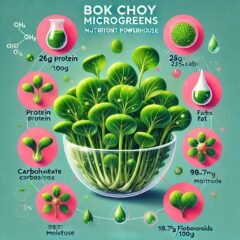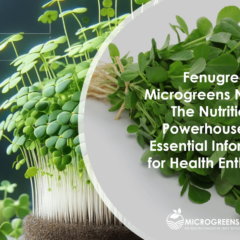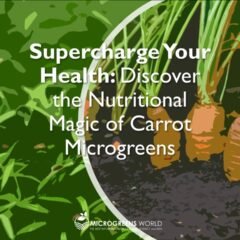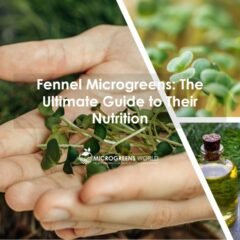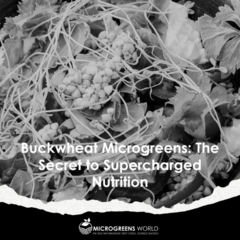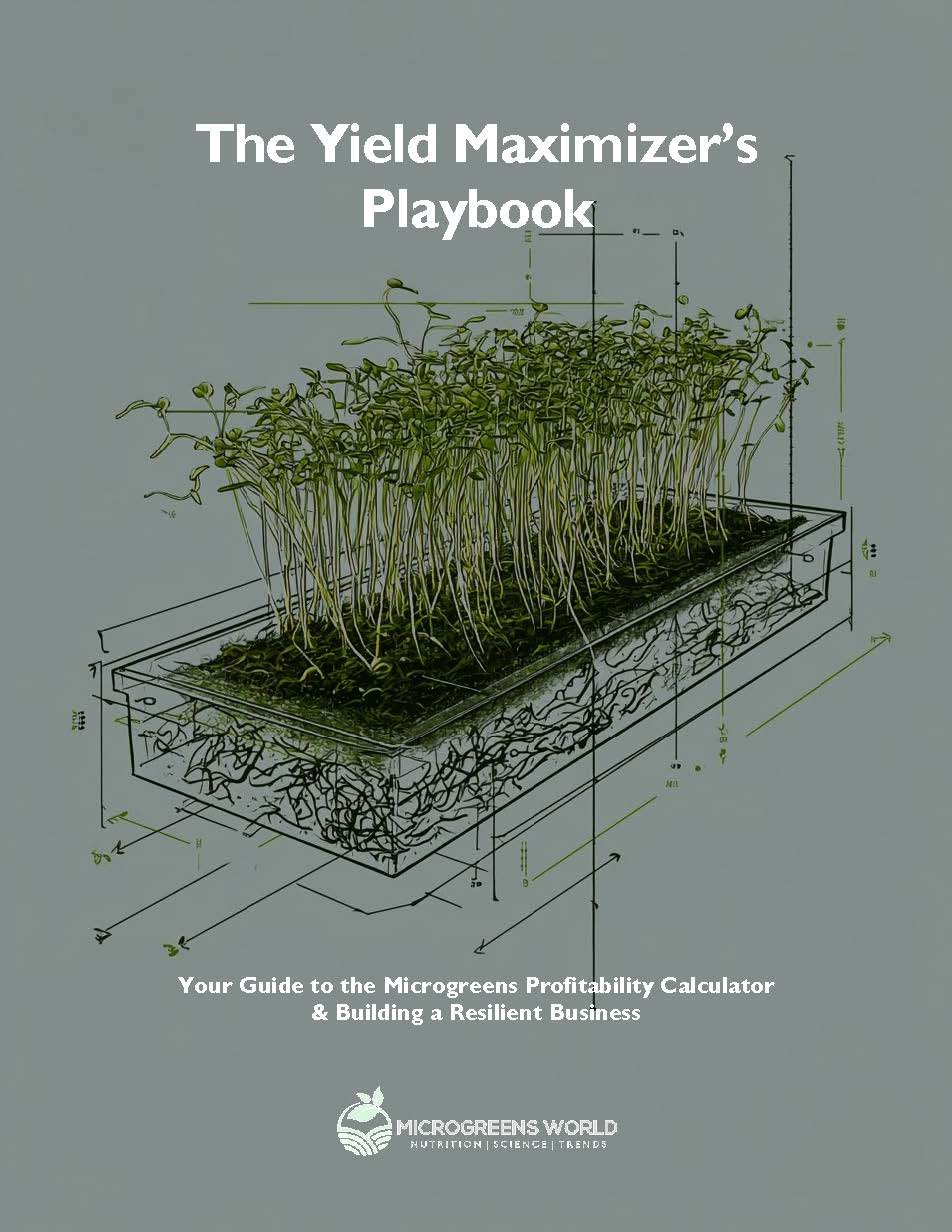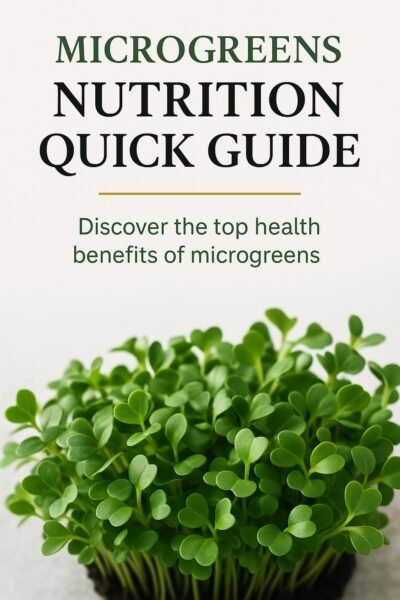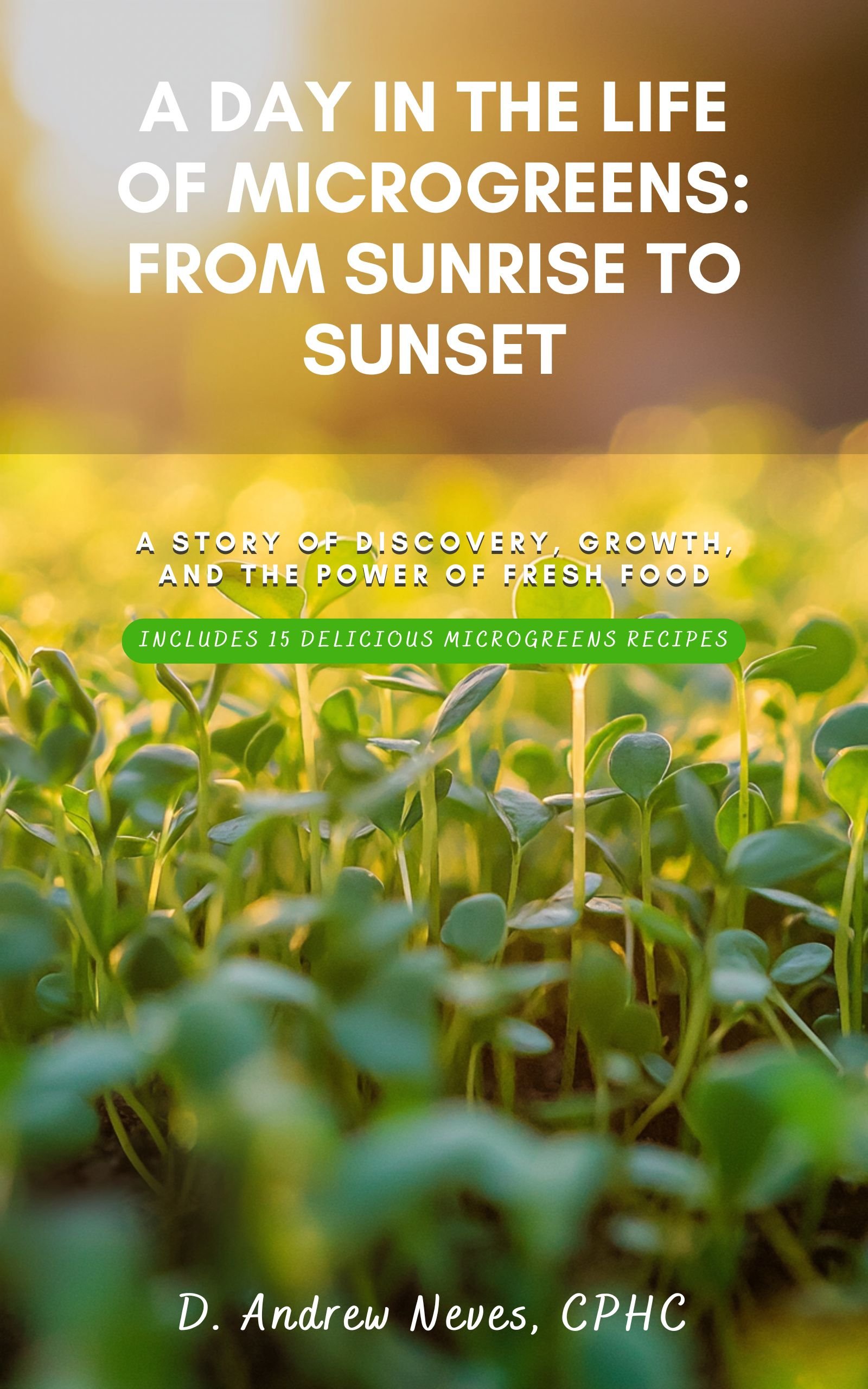Meet Doc Green—your intelligent guide to the science of microgreens. Search smarter, review faster, and interact directly with 2,000+ papers using AI-powered tools built for researchers, growers, and educators.
Varieties
Parsley Microgreens: What You Need to Know About Their Health Benefits
Day 7: Everything’s covered in white fuzz. Again. Third parsley microgreens tray this month that looks like it belongs in a biology experiment, not my kitchen.
Discover Bok Choy Microgreens Nutrition!
Discover the nutritional power of bok choy microgreens! Rich in protein, antioxidants, and vitamins, these tiny greens outshine mature bok choy. Learn growing tips and easy recipes.
Fenugreek Microgreens Nutrition: The Nutritional Powerhouse and Essential Information for Health Enthusiasts
Discover the nutritional powerhouse of fenugreek microgreens! Packed with essential nutrients, these superfoods are a must-try for health-conscious individuals.
Why Carrot Microgreens are the Next Big Thing in Nutrition
Carrot microgreens are nutrient-dense, especially rich in vitamins A (835 mg, 92.8%) and K (13.2, 10.8%), and along with lutein + zeaxanthin (256 mg), the amino acids threonine (0.191 g), leucine (0.102 g), alanine (0.113 g), and glutamic acid (0.366 g) support eye, bone, and brain health, blood clotting, and the immune system. The high antioxidant content makes them a valuable addition to a health-conscious diet.
Discover the Nutritional Wonders of Beet Microgreens
Beet microgreens, rich in vitamins A, C, K, iron, magnesium, and potassium, are nutrient-dense. They contain betalains, potent antioxidants supporting heart health, boosting immunity, and aiding detoxification. High levels of folate and manganese in beets are essential for energy production and bone health.
Quinoa Microgreens: The Key to a Nutrient-Rich Diet
Quinoa microgreens are abundant in potassium and omega-3 fatty acids, gluten-free, and a complete protein containing all nine amino acids. It has good sources of nutrients and health-promoting substances with antibacterial, anticancer, antidiabetic, antioxidant, anti-obesity, and cardio-beneficial qualities. It is also very low in calories.
Unlocking the Nutritional Powerhouse: The Kale Microgreens Guide
Kale microgreens are astoundingly teeming with vitamins: K (325%), C (103.78%), A (26.78%), B2 (26.69%), B6 (11.31%), and B9 (15.50%). They are just rich in calcium (25.40%), iron (20%), potassium (10.24%), and manganese (40%). In addition, they provide lutein, zeaxanthin (104.33%), moderate fiber (10.79%), and all 9 essential amino acids. They are a potent superfood for overall wellness.
The Hidden Health Treasures of Lettuce Microgreens
Humble lettuce microgreens are a silent powerhouse of vitamins K (105% RDI), A (41.11%), and C (10.22%), lutein + zeaxanthin (28.83%), and manganese (10.87%). They contain 18 20 amino acids in small quantities, including all 9 essential ones. The high levels of antioxidants in lettuce microgreens, particularly beta-carotene, boost the immune system, promoting eye health and reducing the risk of chronic diseases.
Why Cilantro Microgreens Are a Must for Your Diet: A Nutrition Guide
Cilantro microgreens are a tremendous source of vitamin K (258.33%), good for kidney function. They are also good sources of vitamins A (37.44%), B-Complex, C (30%), and E (16.67%), and provide moderate dietary fiber (10.00%), and essential minerals copper (25%), potassium (11.09%), and manganese (18.52%). Cilantro microgreens are well known for their high levels of lutein and zeaxanthin (14.42%), which are beneficial for eye health.[5] They are also rich in carotenoids (three times more than mature cilantro leaves [4]), including beta-carotene (21.83%), a fat-soluble antioxidant crucial for organ function and cellular structure protection.
Unlocking the Nutritional Secrets of Lentil Microgreens
Lentil microgreens are impressive muscle-building plants. Vitamin C (18.33%) and a robust B-complex provide for cell and blood health, energy production, and other essential body systems. They are rich in protein (17.92%), boasting 17 of the 20 amino acids and 8 of the 9 essential ones, including leucine (0.63g), arginine (0.61g), and serin (0.50g). The array of minerals also supports bone and skeletal health, iron (17.83%), phosphorus (13.84%), zinc (13.73%), copper (39.11%), and manganese (22.00%).
Sorrel Microgreens: Unlocking the Secrets of Optimal Nutrition
Sorrel microgreens are rich in essential vitamins C (53.33%) and A (22.22%), with moderate amounts of minerals iron (13.33%), magnesium (24.52%), copper (14.56%), and manganese (15.17%). In addition to vitamins and minerals, sorrel microgreens are a rich source of antioxidants having eight of the nine essential amino acids, only lacking in tryptophan. It is also a moderate source of fiber (10.36%).
Supercharge Your Nutrition with Chia Microgreens
Chia microgreens are nutrient-packed, containing all 18 amino acids, 23.7g of omega-3 fatty acids, vitamins thiamin (B1), niacin (B3), and more than 100% daily fiber. It is a mineral storehouse containing calcium (48.5%), iron (42.9%), magnesium (79.8%), phosphorus (68.8%), zinc(41.6%), and more than 100% of the daily recommended value of copper (102.7%), manganese (118.3%), and selenium (100.4%).[1]
Chicory Microgreens: Why They’re a Must-Have in Your Diet
Chicory microgreens are a nutritional powerhouse, rich in vitamins A, B5, B9, C, and K, and essential minerals copper and manganese. They also contain high levels of antioxidants, including beta-carotene and phenolic compounds, lutein, zeaxanthin, Isoleucine, and arginine. These nutrients contribute to several health benefits, including boosting immune function, promoting bone health, and combating oxidative stress, reducing the risk of chronic diseases.
Swiss Chard Microgreens: Health Benefits and Nutritional Facts
Experience the nutritional power of Swiss Chard Microgreens! Packed with vitamins & minerals, they boost your health & wellness. Learn more in our post.
The Potent Nutrients in Pea (Pea Shoot) Microgreens: A Comprehensive Guide
Pea microgreens nutrition has significant amounts of vitamin C (66.7%), reasonable amounts of vitamins B1 thiamin (12.5%), and B5 pantothenic acid (15.0%). They are particularly rich in vitamin B9 folate (10.5%), a nutrient essential for DNA synthesis and cell division. They are rich in the minerals iron (11.6%) and manganese (10.6%), and choline (10.5%) essential in many body processes and supporting heart health, boosting the immune system, and aiding detoxification.
Boost Your Health with Borage Microgreens: A Nutritional Guide
Borage microgreens are nutrient-dense, rich in vitamin C, gamma-linolenic acid (GLA), and antioxidants. Vitamin C supports immune function and skin health. GLA, an omega-6 fatty acid, has anti-inflammatory properties and supports heart health. Their antioxidants protect against cellular damage.
Amaranth Microgreens: Tiny Greens, Big Health Benefits
Amaranth microgreens are rich in Vitamin K, Vitamin C, and iron, which are crucial for blood clotting, immune function, and red blood cell production, respectively. They also contain protein, essential for tissue repair. Health benefits include enhanced immune function, improved bone health, and better digestion due to high fiber content.
Top 30 Microgreens You Can Easily Grow Indoors
The top 30 microgreens you can easily grow indoors include radish, broccoli, arugula, kale, beet, sunflower, pea, basil, cilantro, and mustard greens. Grow these microgreens for their ease of cultivation, nutritional value, and flavor profiles. They can be grown in small containers, require minimal care, and are ready to harvest within 7-21 days, providing a continuous supply of fresh, nutrient-dense greens in your home.
Fennel Microgreens: The Ultimate Guide to Their Nutrition
Fennel microgreens are a powerhouse of nutrition, packed with Vitamin C, calcium, iron, and antioxidants that support overall health. Anethole, the main active component, exhibits anti-cancer activity. Their unique anise-like flavor adds a gourmet touch to meals, making them a delicious and healthy choice for enhancing your diet.
Why Chefs Love Them: A Look at Buckwheat Microgreens Nutrition
Buckwheat microgreens possess an impressive nutritional profile. Studies have shown that they are a rich source of vitamins B, E, and K and minerals such as calcium, Copper, iron, magnesium, manganese, sodium, phosphorus, potassium, and zinc. They are also high in carotenoids, flavonoids, antioxidants, and α-tocopherol contents. They also have dietary fiber, which aids digestion and promotes a healthy gut.
Supercharge Your Health: Discover the Nutritional Magic of Spinach Microgreens
Spinach microgreens are filled with lots of nutrients such as Vitamins A, C, E, and K, minerals such as iron, calcium, potassium, folate, oxidants, and essential plant compounds such as lutein, zeaxanthin, and nitrates. Spinach microgreens are also a good fiber and protein source, containing about 21 calories, adding to your daily calorie needs.
The Power of Purslane Microgreens: A Complete Nutritional Overview
Explore the incredible nutritional profile of Purslane Microgreens in this detailed overview. Unleash their power for a healthier you!
The Ultimate Guide to Cabbage Microgreens Nutrition including Nutrition Data, Facts, Info, and Recipes
Cabbage microgreens, especially red cabbage, have more vitamin C than an orange and 40 times more vitamin E than a cabbage. Cabbage microgreens’ benefits include supporting blood clotting and building bones, preventing calcification or hardening of heart arteries, protecting the body from free radicals, and reducing the risk of chronic diseases.
Marigold Microgreens: The Vision-Boosting Powers of This Orange Autumn Flower
Marigold microgreens are a variety of edible orange autumn flowers used for centuries to make herbal teas. They contain two vital and rare carotenoids, lutein and zeaxanthin, that are vision detoxifiers of an eye-damaging kind of oxygenation called reactive oxygenated species or ROS toxins.
Nasturtium Microgreens: Everything You Need to Grow, Eat, and Use Them
Recently, a friend of mine created a spicy shrimp pasta salad with an edible flower called nasturtium, which got me thinking about nasturtium microgreens. I created this post to let you know what I learned about one of the most nutrient-rich plants on earth.

